Falcated Duck Mareca falcata 羅紋鴨
Category I. Scarce winter visitor, much declined this century, numbers only 10-20% of what they were in up to the mid-1990s.
IDENTIFICATION
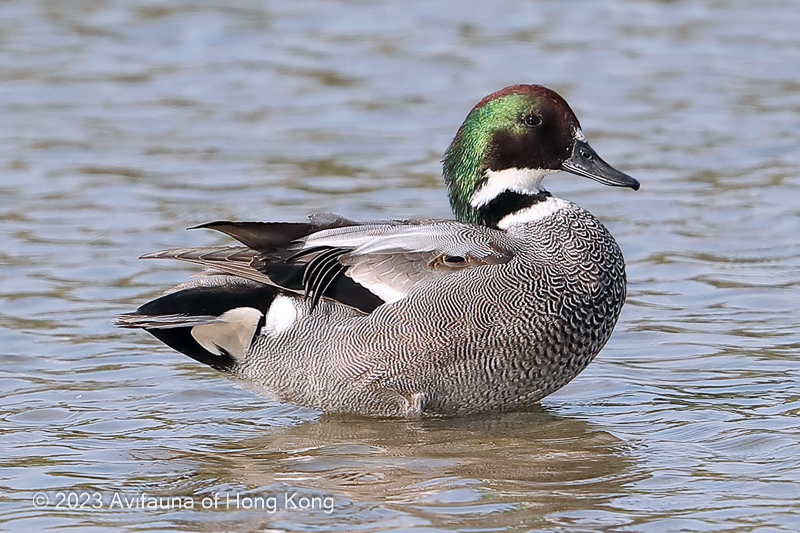
Jan. 2018, Michelle and Peter Wong. Male.
46-54 cm. Adult males are very distinctive due to flowing deep chestnut crest that is green at the sides. Spot above bill base and throat are white, collar black, chest coarsely vermiculated black and white, rest of underparts more finely so. Sides of undertail creamy-buff bordered with black, scapulars pale grey with long pale grey edged black secondaries drooping over rear of body.
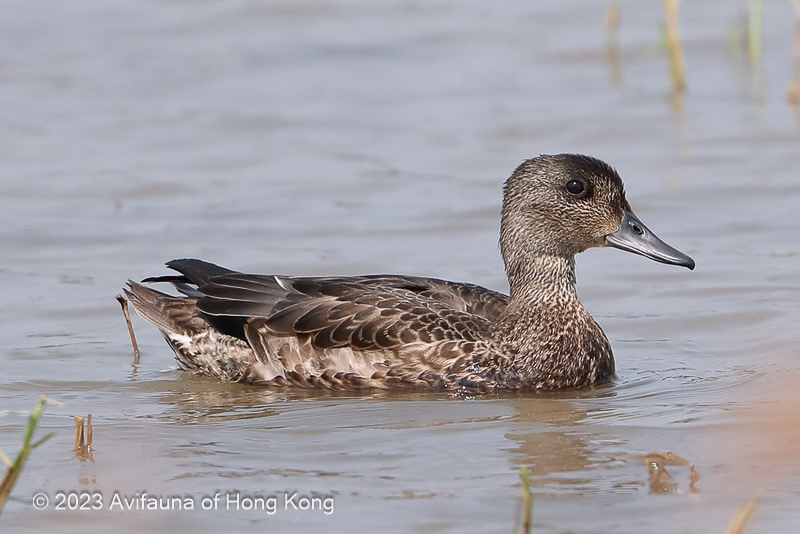
Oct. 2017, Michelle and Peter Wong. Female.
Female similar to female Eurasian Wigeon but distinguished by square-shaped head that is greyer than the brown body (opposite on Eurasian Wigeon). Head is finely streaked and there is often a poorly-developed crest on the hind neck. Broad warm buff fringes to flank feathers.
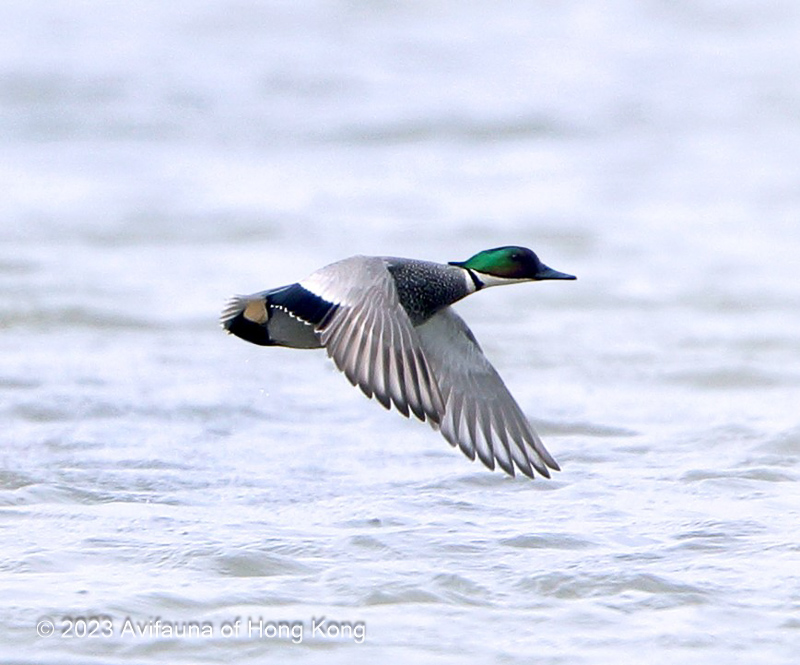
Jan. 2016, Michelle and Peter Wong. Male.
In flight male is pale greyish on the upperwing with contrasting narrowly white-tipped black secondaries.
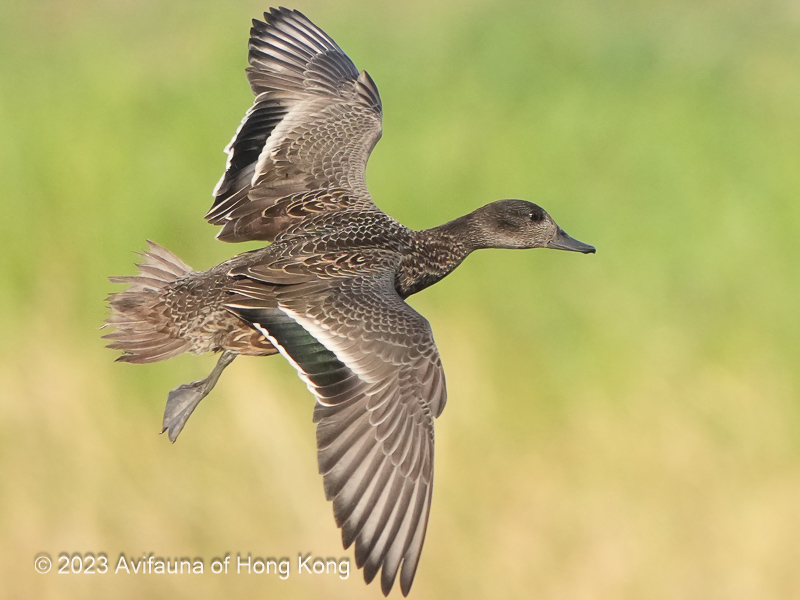
Oct. 2022, Paul Leader. Female.
In flight female shows dark secondaries with white lines above and below.
VOCALISATIONS
Males give a whistling call similar to that of Eurasian Wigeon, but it differs in being less inflected and it terminates in a short, wet buzz. The calls of both species can be heard in this recording.
DISTRIBUTION & HABITAT PREFERENCE
Most records are from the Deep Bay area, mainly Mai Po NR and Lok Ma Chau MTRC Ecological Enhancement Area; there is a small number of records from fish pond areas. There are rather few records away from the Deep Bay area: three records at Long Valley from 22 September to 10 December, one at Black Point Ash Lagoon on 29 December 2020, four at Mui Wo on 3 March 1961, a female at Kai Tak on 20 December 1974 (considered to have possibly been an escape from captivity) and one at Shuen Wan on 8 October 1992.
OCCURRENCE
Falcated Duck is a scarce winter visitor from the last week of October to the third week of April (Figure 1). Extreme dates are 22 September 2019 and 26 May 1987, with single females recorded over-summering in 1995, and probably also in 1996. Extreme dates this century are 12 October and 25 April.
The highest count is 413 at Mai Po on 14 January 1984, and in most winter periods from 1981-82 to the mid-1990s, the peak count was in the range 100-250; however, as Figure 2 indicates, there was subsequently a sharp decline in the numbers recorded. The highest count recorded since winter 1998-99 is a mere 28 on 12 February 2012.
The first mention of the occurrence of Falcated Duck in HK appears to be that of Herklots (1932), who stated that it certainly visited the ‘local Territories e.g. Mai-po, during the winter...’ Macfarlane and Macdonald (1966) stated that most records were from the Deep Bay area between 19 September and 13 April, including 250 birds seen at the mouth of the Shenzhen River. Chalmers (1986) stated that prior to the ban on hunting in HK, first enforced during the winter of 1981-82, Falcated Duck wintered in Inner Deep Bay, and that once this ban became effective increasing numbers were present at Mai Po marshes itself.
BEHAVIOUR, FORAGING & DIET
Often in loose association with Eurasian Wigeon and Gadwall.
RANGE & SYSTEMATICS
Monotypic. Breeds northern Mongolia, northeast China and southeast Siberia through Sakhalin to Hokkaido and northern Honshu, the Kuriles and Kamchatka. Winters south of the breeding range in Japan, Korea, east and south China, northern Indochina and northern India (Carboneras and Kirwan 2020). In China breeds in the far northeast and winters in east and south China, including Taiwan and Hainan (Liu and Chen 2021).
CONSERVATION STATUS
IUCN: Near-threatened. Population trend decreasing. Moderately rapid population decline apparent from survey data and inferred from very high levels of hunting.
Figure 1.
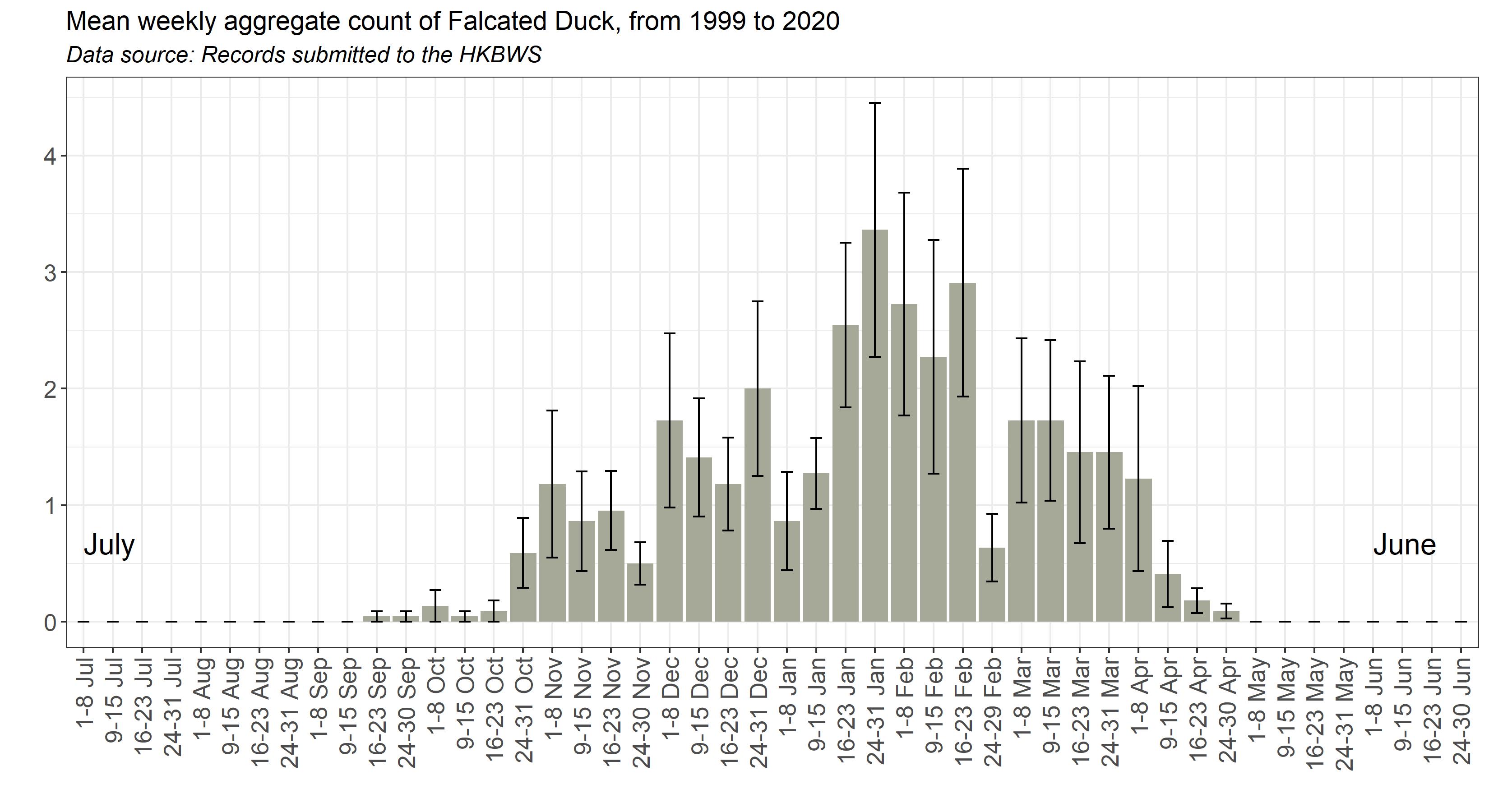
Figure 2.
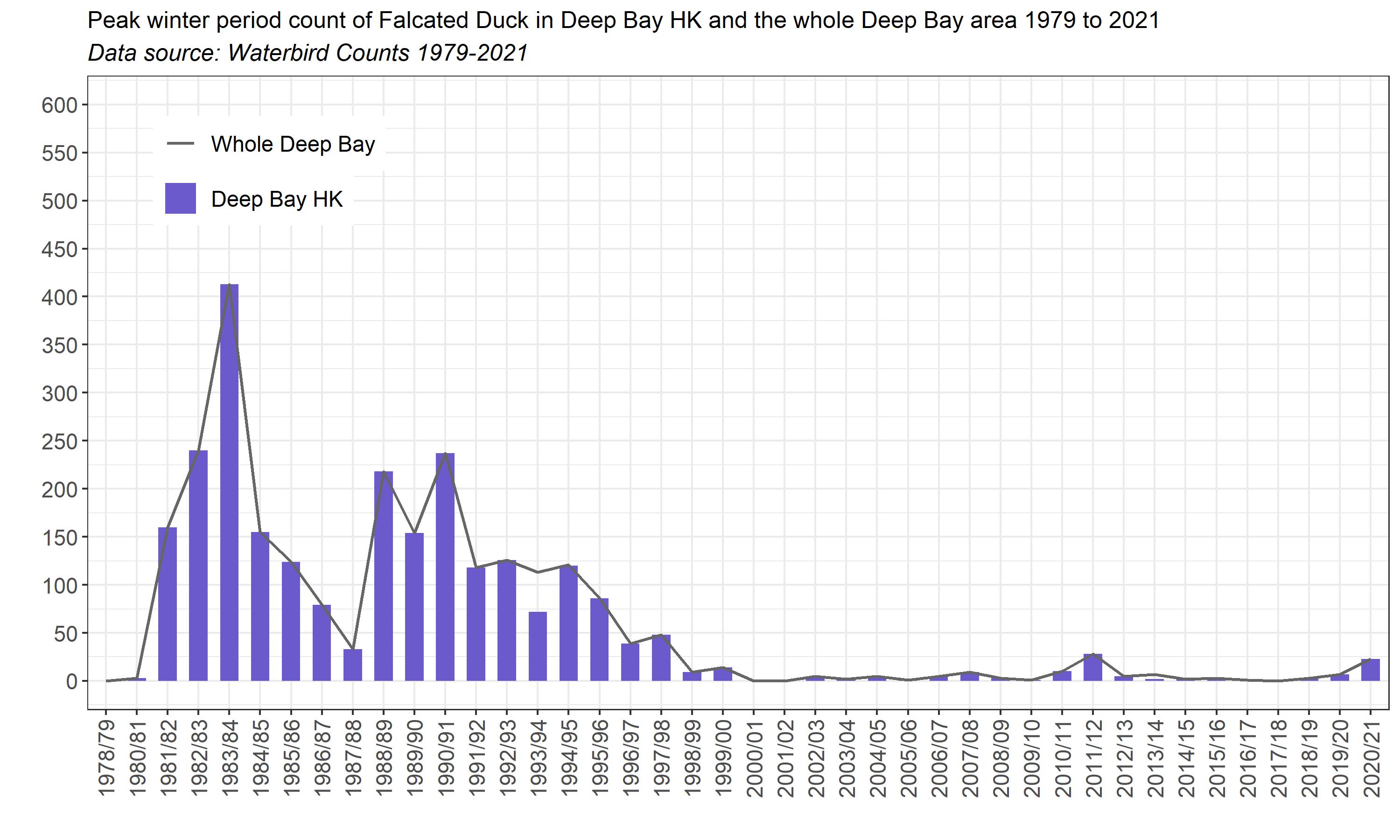
Carboneras, C. and G. M. Kirwan (2020). Falcated Duck (Mareca falcata), version 1.0. In Birds of the World (J. del Hoyo, A. Elliott, J. Sargatal, D. A. Christie, and E. de Juana, Editors). Cornell Lab of Ornithology, Ithaca, NY, USA. https://doi.org/10.2173/bow.falduc.01
Chalmers, M. L. (1986). Annotated Checklist of the Birds of Hong Kong. Hong Kong Bird Watching Society, Hong Kong
Herklots, G. A. C. (1932). Birds of Hong Kong Part XII. The Falcated Teal. Hong Kong Naturalist 3: 162-163.
Liu, Y. and S. H. Chen (2021). The CNG Field Guide to the Birds of China (in Chinese). Hunan Science and Technology Publication House, Changsha.
Macfarlane, A. M. and A. D. Macdonald, revised by Caunter, J. R. L. and A. M. Macfarlane (1966). An Annotated Check-list of the Birds of Hong Kong. Hong Kong Bird Watching Society, Hong Kong.

